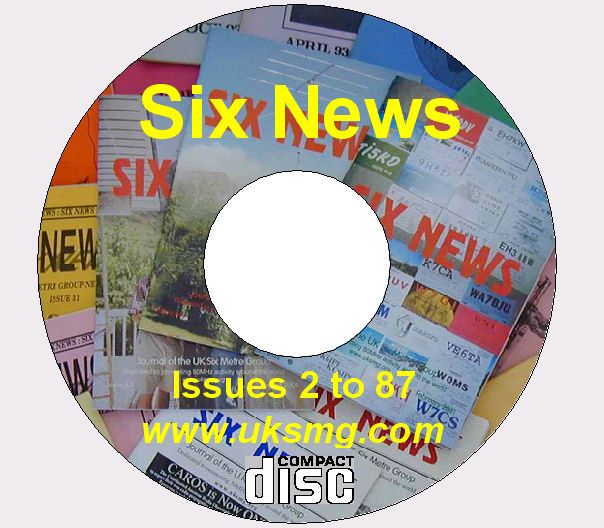

home > archive > how to work 6m DX > beginner's guide to Meteor Scatter operating

Thanks to all of our authors since 1982!
|
beginner's guide to meteor scatter operating |
|||||||||||||||||||||
|
Basic Station Requirements It is difficult to specify the lowest power and smallest antenna that can be used for MS as during major showers contacts can be made with 10W and indoor dipoles. However, using higher ERP will increase your chances of success. Elevation is not necessary although it could be useful for short distance contacts (less than 400km). The only other requirement is an accurate digital watch as you will need to know the time to within one second. MS Procedures On 50MHz and during the bigger showers it is sometimes possible to make contacts using ‘normal’ QSO techniques. But as MS bursts are often quite short, special procedures have also been developed to exchange the information needed for a complete contact as quickly as possible and this will increase your chances of success. The exchange consists of both callsigns, a report and a confirmation that all has been received OK. As signals will only be heard intermittently there is great danger of doubling with the other station. To prevent this a strict sequence of one minute TX followed by one minute RX is employed. The reporting system used consists of two numbers unique to MS operating. The first number indicates the burst duration and the second the burst strength. Once you have started to send a station a report it is NEVER changed, even though the reflections may improve or deteriorate. The numbers used are as follows: First Number (Burst Duration) 2- bursts up to 5 sec Second Number (Burst Strength) 6- up to S3 Therefore if you hear short and weak bursts you will probably send "26". Phrases such as "This is G9ZZZ calling G5XYZ" have no place in MS operating procedures, only essential information is sent.
During skeds, stations will call without the use of phonetics as both parties know who they are listening for. During random contacts use of the phonetic alphabet is recommended. At times when major showers are in progress it is recommended to "Break" every 15 seconds in case a long burst is in progress. QSO Procedure The QSO starts with one station calling the other eg "G9ZZZ G5XYZ G9ZZZ G5XYZ. A report is sent when the operator has positive evidence of having received the correspondent’s or his own callsign, or parts of them. The report is then given as follows "G9ZZZ G5XYZ 26 26 G9ZZZ G5XYZ 26 26." As soon as either operator copies both the calls and the report, he can start sending a confirmation "G9ZZZ G5XYZ Roger 26 Roger 26 G9ZZZ G5XYZ Roger 26 Roger 26..." When either operator receives a confirmation message (eg Roger 26) and all other information is complete he must confirm with a string of Rogers usually for 2/3 periods. It is a good idea to insert "73" now and then in order to stop yourself cracking up! Arranging Skeds In order to maximise the chance of success, skeds should be arranged at optimum times. The sporadic meteor rate peaks at 0600 daily but during showers it is possible to be more specific; computer programs and data sheets are available for this purpose. There are two ways of arranging MS skeds. The most convenient method is on the radio. Many six-metre operators are also QRV on two metres and can often be heard setting up skeds on the vhf net (14.345 +/-). The six metre liaison frequency (28.885) depending on conditions can also be used to set up skeds. Packet radio and e-mail are also good ways of directing sked requests to Europe. Alternatively one can write to a station heard arranging skeds if you do not have the facility to transmit. When arranging an MS sked, a certain minimum amount of data needs to be exchanged: A. Date If high-speed CW is to be used then the maximum speed you can accept must also be specified. In the bigger showers hand-speed CW can be used quite successfully on 50MHz.
|
guide to MS operating
MS CW test notes
living with interference
RU new to 6m?
working pileups
QSLing tips
Eu to Au via short path
managing 6m pileups
DXpedition to Jordan
beginners guide to 6m
1997 bandplan survey
UK 6m repeater network
MS DX on a dead band
GD to K6 by EME
my 1st 6m QSO
a little help from my friends
50MHz
as was, is and will be?
1998 DXpedition to Lebanon
UK 6m repeater network '98
the band plan
TL5A, Central Africa
intercontinental window